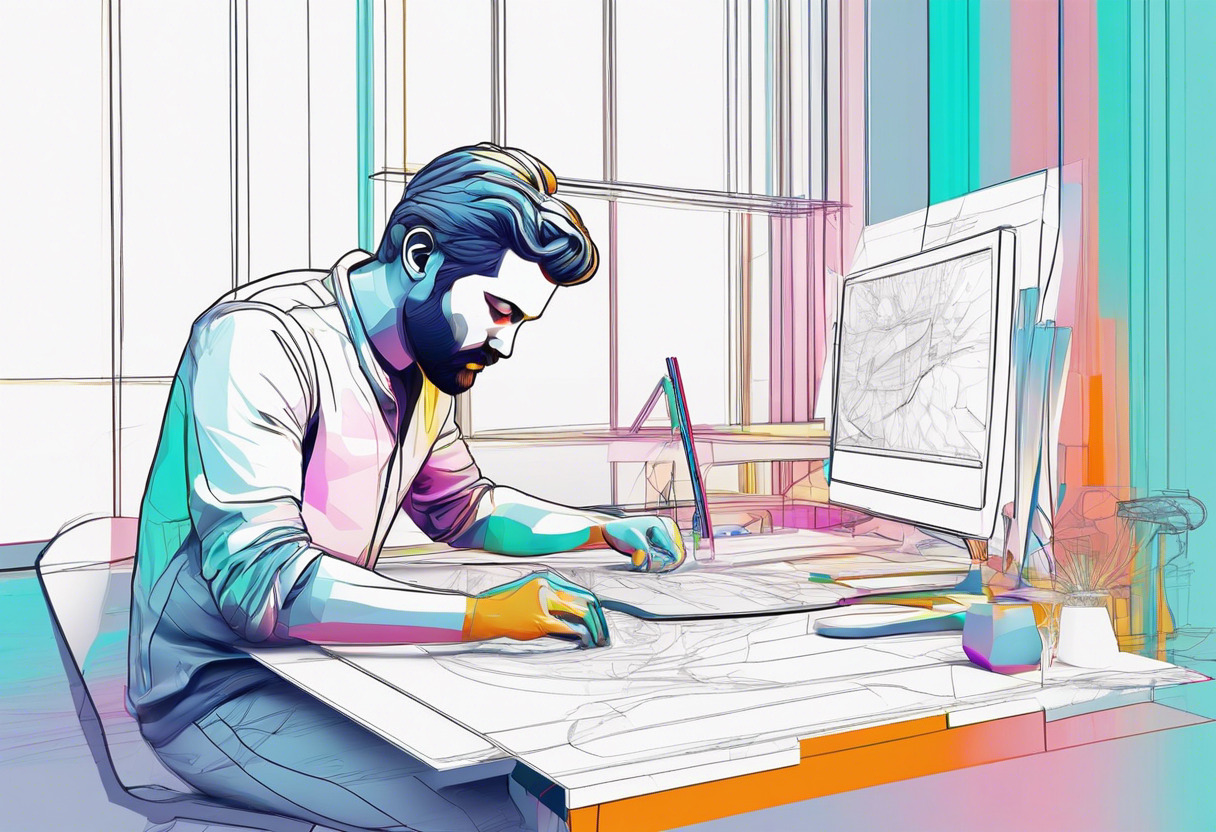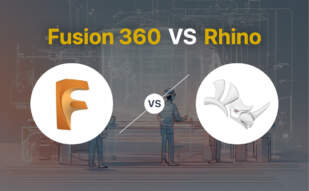3DCoat overpowers Mudbox with progressive AR/VR enhancements, regular advancements, and multi-OS reliability—notwithstanding its nuanced licensing stipulations. Mudbox, while user-friendly and cost-effective, is limited by infrequent updates. Ideal for beginners, digital artists who prioritize contoured sculpting over evolving tech trends.

Key Differences Between Mudbox and 3DCoat
- Sculpting: Mudbox excels in sculpting tools and brushes. 3DCoat provides integrated rendering with sculpting tools.
- Licensing: Mudbox uses subscription-based, single-seat licensing. 3DCoat supports simultaneous use on two systems with single-license constraint.
- Pricing: Mudbox costs $90/year with free 3-year license for students. 3DCoat ranges from $49 to $468 divided into individual, company, student licenses.
- Updates: 3DCoat exhibits consistent product development. Mudbox has halted introducing new features or bug fixes since 2020.
| Comparison | Mudbox | 3DCoat |
|---|---|---|
| Developer | Autodesk | Pilgway |
| Cost | $90/year | Range from $49 to $468 |
| Strength | Sculpting Tools and Brushes | AR/VR Solutions, Sculpting Tools, UVs, Renderer |
| File Import/Export | .obj, .fbx, .bio, and native .mud | Import/Export with Lightwave 2018/19/20 |
| Subscription | Subscription-based | One-time purchase, Monthly, Quarterly, Rent-for-1-year |
| Compatibility with Other Software | Great with Autodesk software | Compatible with Lightwave |
| License | Free 3-year for students | Two Computers under one license, online activation |
| Notable Features | 3D layers, Non-destructive sculpting, High polygon counts, 3D painting, texturing | 4K support, Smart materials, Render Scene in Renderman, Improved curvature calculation, New Primitives in Retopo Room. |
What Is Mudbox and Who’s It For?
Mudbox, developed by Autodesk and originally created by Skymatter, is a digital sculpting software that offers cost-effective, highly flexible 3D design solutions. Used by renowned names such as Epic Games and Blur Studio, this tool revolutionizes 3D art and design with its astute focus on intricate detailing, mesh deformation, and non-destructive workflows. It is ideal for both beginners wishing to explore digital 3D art and seasoned professionals seeking advanced software compatible with 3D applications like 3ds Max, Maya.
Arising from the legacy of The Lord of The Rings, Mudbox is an essential part of the production pipeline since its first deployment on King Kong (2005). This software, accompanied by a plethora of brushes, provides a platform to bring your creations to life, be it starting from scratch or adding details to pre-existing models. Students also gain a competitive edge with a 3 years free license.

Pros of Mudbox
- Powerful and versatile selection of sculpting tools and brushes
- Seamless compatibility with other Autodesk tools
- Non-destructive workflow
- Robust painting and texturing features
- Competitive pricing with special offers for students.
Cons of Mudbox
- Lacks continuous development updates with new features
- Requires polygonal software for creating base mesh.
What Is 3DCoat and Who’s It For?
3DCoat, by Ukrainian firm Pilgway, is a comprehensive AR/VR technology toolset tailored for individuals seeking to explore and expand their creative horizons. With the latest available versions, 3DCoat 2022 and 3DCoatTextura 2022, this software reinvents 3D texturing and sculpting. Catering to diverse users, from workers in professional environments to students and universities globally, it offers a range of licensing options including individual, company (node-locked and Floating), student, and university licenses.
Sporting smart materials and regular feature updates, 3DCoat provides an enriched user experience with tools for UVs, integrated rendering and many more. It also offers users the flexibility to experiment with 3D design on two different computers under one license. With its smart materials usage history, proxy slider, baking scan, it has become a staple for texturing import/export for many artists who use Lightwave 2018/19/20.

Pros of 3DCoat
- Wide array of licensing options
- Regular updates and new features
- AR/VR tech-focused solutions
- Compatible with Lightwave 2018/19/20
- Multitude of sculpting tools, UVs, and integrated renderer solution
Cons of 3DCoat
- Internet connectivity required for licensing validation
- Limited guidance on offline running and licensing
- Upgrades are chargeable
Mudbox vs 3DCoat: Pricing
While Mudbox boasts of a competitive subscription-based pricing of $90/year, 3DCoat offers a range from $49 to $468 for different licenses with various rental options.
Mudbox
Being subscription-based, Mudbox is among the more cost-effective options in the digital sculpting landscape, with a price poised at a favourable $90 per year. It’s a Catch-22 for students, as they’re offered a free 3-year license, falling neatly into their budget. Competition or not, Mudbox has claimed its niche with its comfortably priced, yet powerful software.
3DCoat
3DCoat, developed by Pilgway, rolls out a myriad of pricing options that cater to a wider audience. The license price hovers from $49 for 3DCprinting licenses to $468 for Floating licenses. The license includes individual, company (node-locked and Floating), student, and university versions which were introduced with the 2021 version. This pricing strategy, encapsulating a gamut of purchase and rental options, no doubt, sets them apart in the AR/VR tech-focused solutions market.
The Verdict: Mudbox vs 3DCoat – Which Suits Your Needs?
When choosing between Mudbox and 3DCoat, the features, pricing, and your unique needs take center stage. Let’s dive in.
Beginner 3D Artists and Students
For those dipping their toes into the 3D world,Mudbox provides a more cost-effective, user-friendly option. Ideal for 3D newcomers and students – who can avail a 3-year license for free, its utilities allow for detailed refinement using a range of brushes and stencils. Compatibility with Autodesk also makes Mudbox an attractive choice for those balancing multiple tools.
Pro Artists and Developers
3DCoat, on the other hand, caters strongly to professionals. Its regularly updated diverse set of features, including texturing import/export compatibility with Lightwave, and advanced 4K support, provides a robust platform for seasoned 3D artists and developers. Required internet connectivity for certain functions may be a limitation for some users.

Large-scale Production Teams
3DCoat also stands out for large scale production teams where efficient collaboration is key. The offer of ‘Floating’ licenses to companies, enables creative collaboration without unnecessary licensing hurdles. The regular insertion of new tools and functionalities ensure that teams stay ahead of technological advancements.

Struggling between Mudbox vs 3DCoat? Consider skill level and project requirements. For 3D beginners, students, or budget users, Mudbox with its user-friendly and cost-effective bustle fits the bill. Yet, for professional artists, developers, or large production teams, 3DCoat, with its advanced features, regular updates, and flexible licensing options leads.
Tiffany Brise
Content writer @ Aircada, patiently awaiting a consumer AR headset that doesn’t suck.





